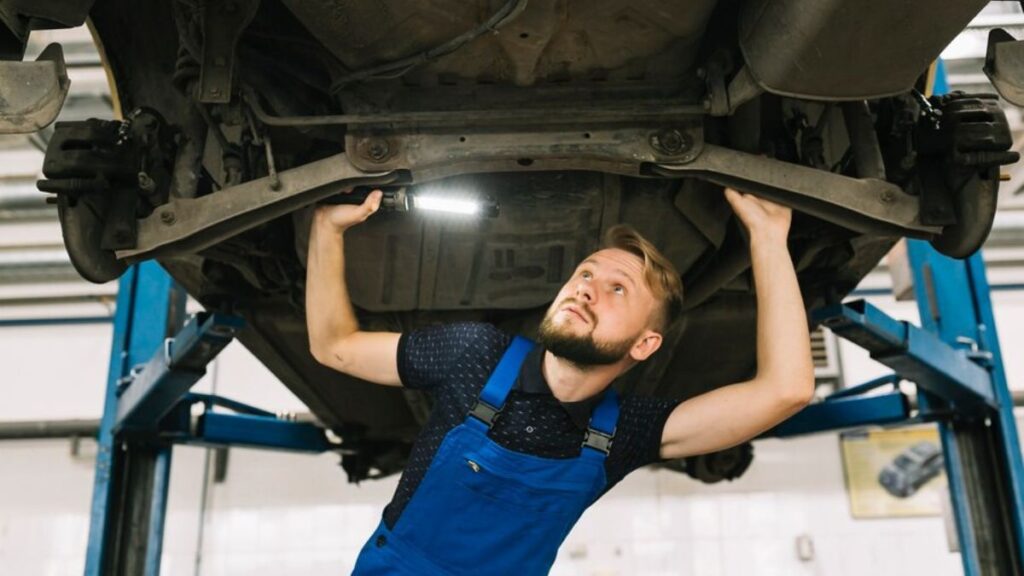When it comes to vehicle performance, most drivers focus on the engine’s horsepower or the sleek design of their car. However, one critical component often flies under the radar: the lower control arm. This unsung hero plays a pivotal role in your vehicle’s suspension system, significantly impacting ride quality and handling. Understanding how this part works can help you maintain optimal driving conditions and avoid costly repairs down the line. Dive into this essential topic to discover how a lower control arm affects not just your vehicle’s suspension but also your overall driving experience!
Understanding the suspension system of a vehicle
The suspension system is a complex network designed to support a vehicle’s weight while providing stability and comfort. It connects the car’s body to its wheels, allowing for smooth handling on various terrains.
Key components include springs, shock absorbers, struts, and control arms. Together, they work to absorb bumps and vibrations from the road. This ensures that passengers enjoy a comfortable ride without excessive jolts or sways.
Proper alignment of these parts is crucial for effective performance. When aligned correctly, your vehicle responds swiftly during turns and stops. Poor suspension can lead to uneven tire wear and decreased fuel efficiency.
A well-functioning suspension also enhances safety by keeping tires in contact with the road surface. This improves traction during braking and accelerations while reducing the risk of skidding or losing control in adverse conditions. Understanding this system helps you appreciate why regular maintenance is so vital for your vehicle’s longevity.
What is a lower control arm and its function
The lower control arm is a vital component of your vehicle’s suspension system. It connects the chassis to the wheel hub, allowing for controlled movement as you drive.
This part plays a significant role in maintaining alignment and stability. It ensures that your wheels can move up and down while also keeping them properly aligned with the vehicle body.
When you hit bumps or navigate turns, the lower control arm absorbs shocks and helps maintain tire contact with the road. This function is crucial for a smooth ride and optimal handling.
Moreover, it supports other suspension components like struts and sway bars, contributing to overall performance. Without a well-functioning lower control arm, your vehicle’s handling could deteriorate significantly, affecting safety and comfort on every journey.
Signs of a damaged or worn out lower control arm
A damaged or worn-out lower control arm can manifest in several noticeable ways. One of the first signs is unusual tire wear. If you notice uneven tread patterns, it could indicate that your suspension isn’t aligned properly.
Another common symptom is a clunking noise when driving over bumps. This sound often means that the bushings or joints within the lower control arm are failing.
In addition to noise, pay attention to handling issues. If your vehicle feels unstable or pulls to one side while steering, it’s likely time for an inspection.
Furthermore, excessive vibrations felt through the steering wheel can signal trouble with this crucial component.
If you spot any visible cracks or rust on the lower control arm itself during regular checks, don’t ignore them—these signs warrant immediate attention from a professional mechanic.
How a faulty lower control arm affects the suspension system
A faulty lower control arm can wreak havoc on your vehicle’s suspension system. This crucial component connects the wheel hub to the chassis, allowing for smooth movement while absorbing shocks from the road.
When it wears out or is damaged, it can lead to misalignment of your wheels. This misalignment affects handling and steering precision, making your car feel unstable during turns and maneuvers.
Additionally, uneven tire wear becomes a common issue as one side may take on more stress than the other. Over time, this not only reduces tire lifespan but also compromises safety.
You might also experience increased vibrations traveling through the frame of your vehicle. These vibrations make for an uncomfortable ride and can signal deeper issues within the suspension system that need addressing promptly.
Importance of regular maintenance and replacement of lower control arms
Regular maintenance of your lower control arms is crucial for vehicle safety and performance. These components bear a significant load, supporting the weight of the car while allowing for smooth movement over bumps.
Neglecting them can lead to premature wear, resulting in costly repairs down the line. Worn lower control arms can alter alignment, affecting tire wear and handling stability.
Replacing damaged or worn-out lower control arms ensures that your suspension system functions properly. This not only enhances ride comfort but also boosts overall driving confidence.
Routine checks can identify issues early on, saving you from unexpected breakdowns. Investing time in regular maintenance pays dividends by prolonging the lifespan of your vehicle’s suspension system and enhancing road safety. Don’t wait until it’s too late; proactive care is key to maintaining optimal performance on every drive.
Tips for choosing the right lower control arm for your vehicle
Choosing the right lower control arm is crucial for your vehicle’s performance. Start by checking your vehicle’s make and model. Compatibility is key.
Next, consider the material. Lower control arms come in various materials like steel, aluminum, or composite. Steel offers durability but may add weight, while aluminum is lighter and often enhances handling.
Don’t forget to inspect the bushings that come with it. Quality bushings can significantly impact ride comfort and noise reduction.
Look for reputable brands known for their craftsmanship and reliability. Read reviews from other users to gauge long-term performance.
If you’re unsure about installation, opt for parts that include comprehensive guides or seek professional help to ensure a seamless fit. Prioritize safety; selecting a high-quality lower control arm will preserve your suspension system’s integrity over time.
Conclusion
The lower control arm plays a vital role in your vehicle’s suspension system. Understanding how it functions helps you appreciate the importance of maintaining this crucial component. A damaged or worn-out lower control arm can lead to serious handling issues, uneven tire wear, and even compromised safety on the road.
Regular inspections and timely replacements are key to ensuring that your car operates smoothly. When choosing a new lower control arm, consider factors like compatibility with your vehicle model and the quality of materials used.
Maintaining this part not only enhances driving comfort but also prolongs the life of other suspension components. Prioritizing care for your lower control arms means investing in both performance and safety for your vehicle over time.






